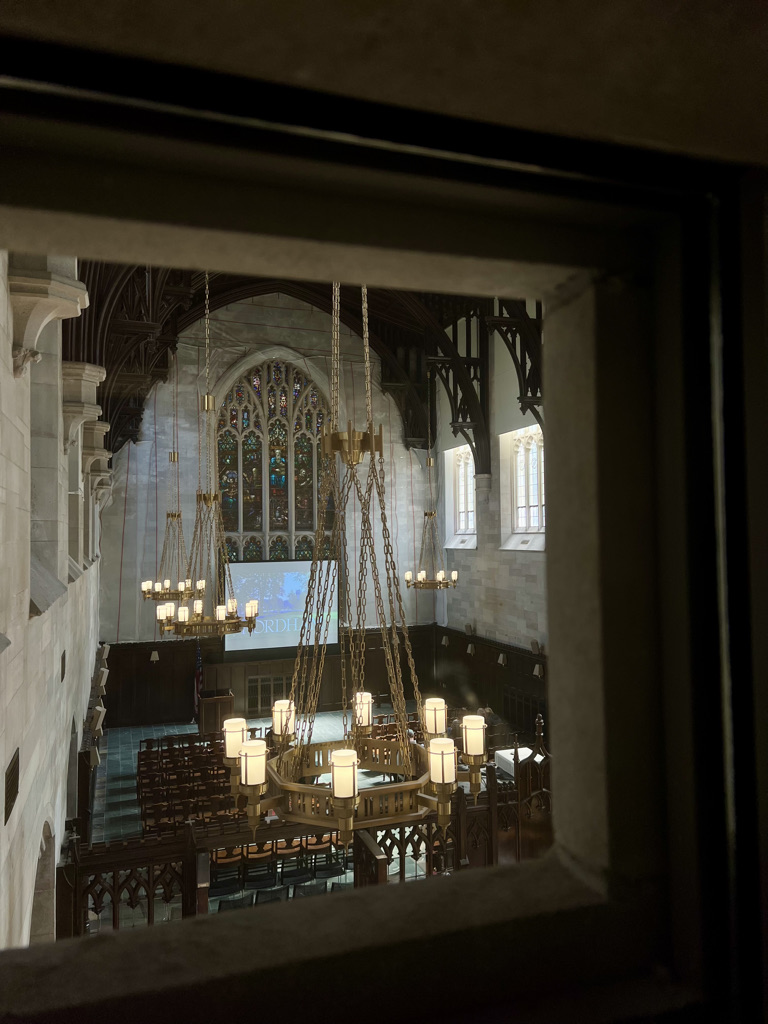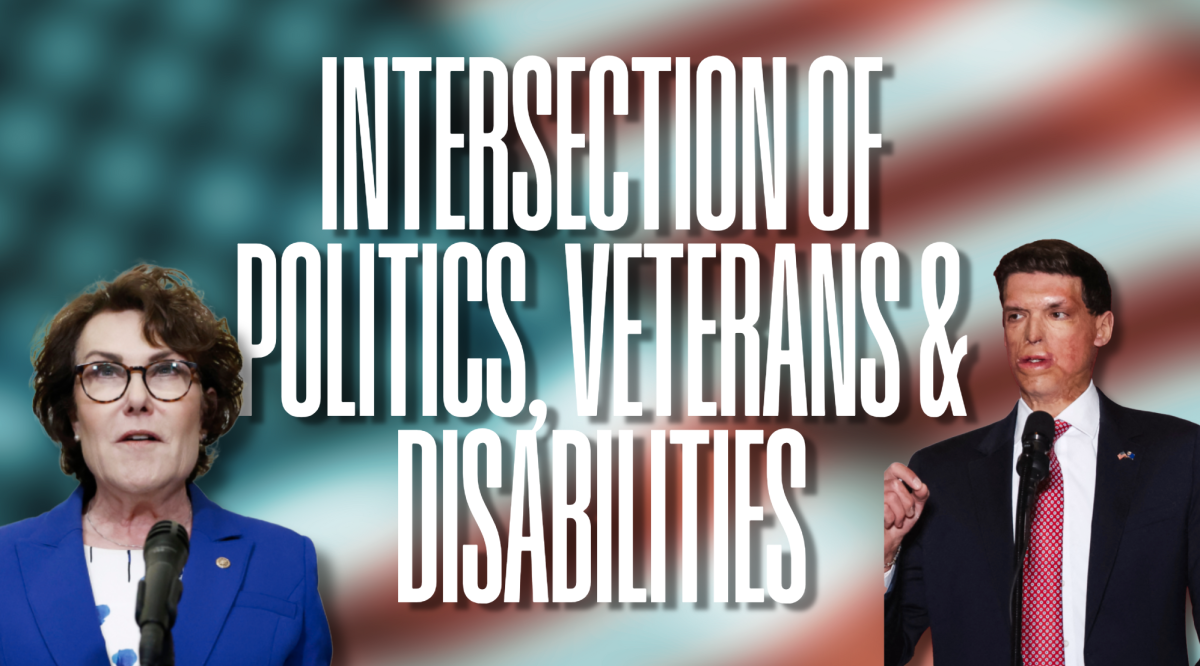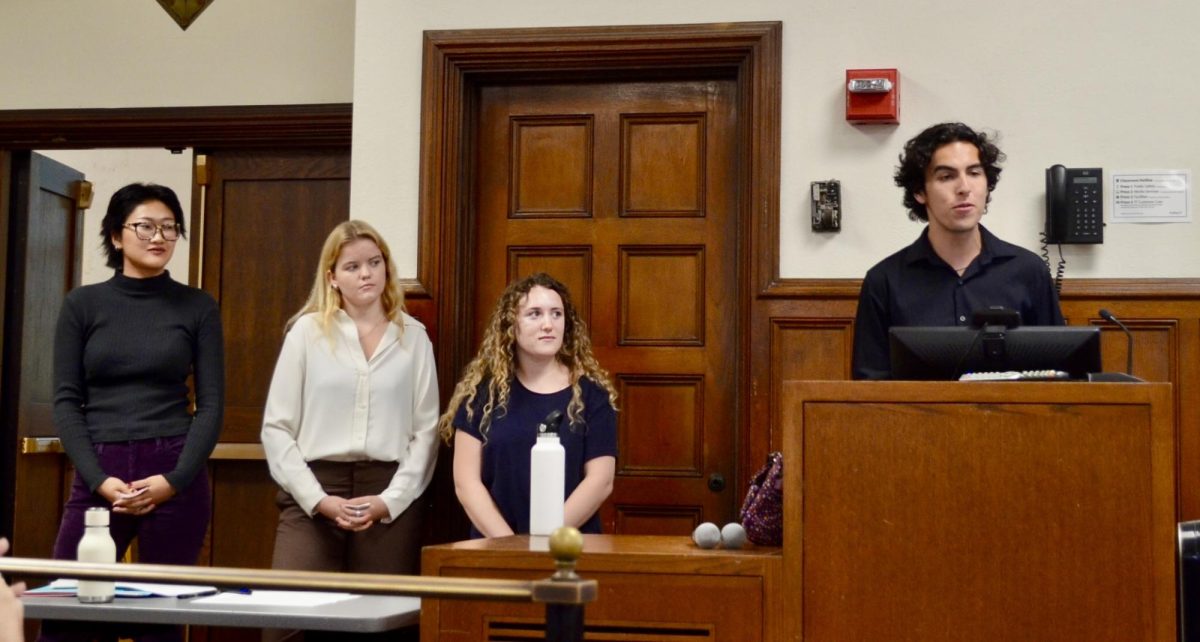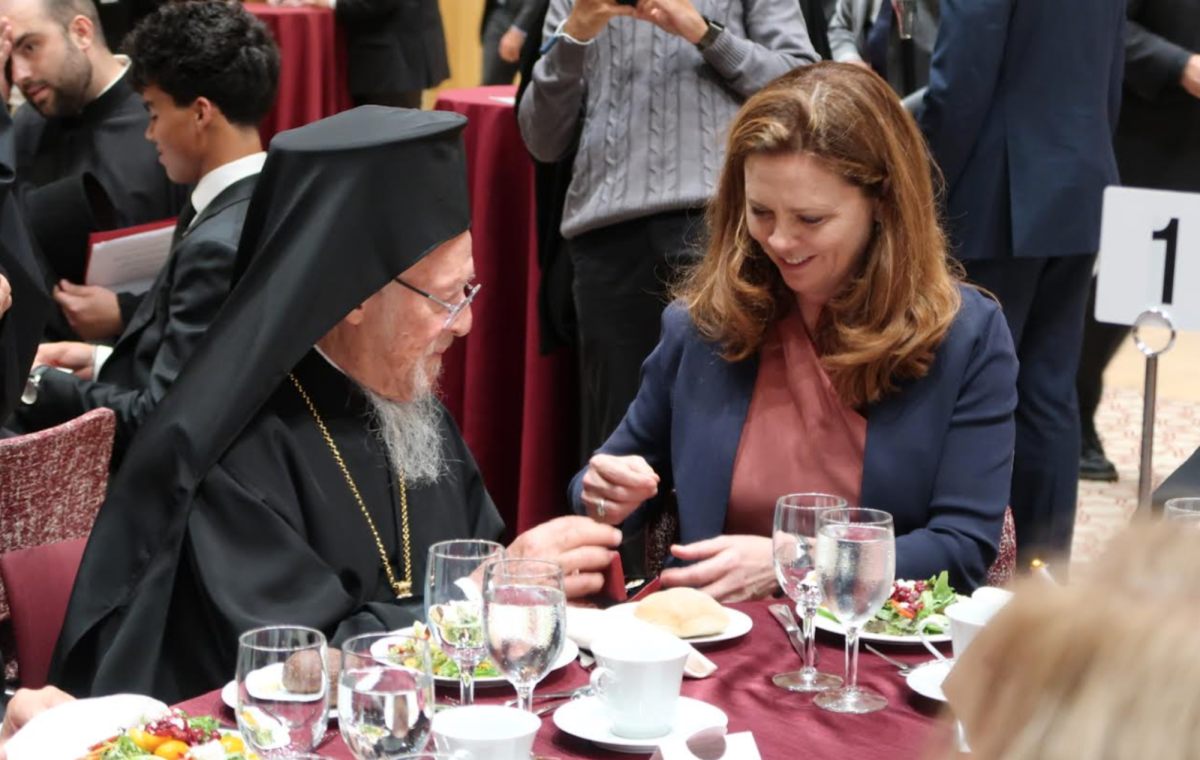By Michael Dobuski

A woman in an orange dress behind me is telling me a story about how she was stuck in traffic on the way here, trying to give her tickets to passersby. She was convinced that she and her husband were going to be late. The thing was, though, every person she offered her tickets already had them. “It’s never like this,” she said. “It’s all because of Wynton Marsalis. We love Wynton Marsalis.”
Maybe this requires a bit more of an explanation. It is Saturday night, almost 8 p.m., and I am skirting around a fenced-off collection of buildings on Goulden Avenue and 195th Street. It is dark out, there is a drizzle and my dress shoes are beginning to dig into my Achilles tendon. Worryingly, none of the buildings that make up Lehman College appear to be open or, for that matter, inhabited. And then, mercifully, out of the rain, a crowd of people cross the street and enter the campus through a security gate. I was about to hop the fence. Grateful that was not the night I discovered if The Fordham Ram’s budget could afford bailing its Bronx correspondent out of prison, I enter.
The lobby of Lehman College’s concert hall is teeming with people, despite the fact that the show they are all there to see was supposed to have started five minutes ago. Once in my seat, someone on the PA system apologizes for the delay, thanks us all for our patience and assures us that the show will begin shortly. After a beat, a rumble of laughter from the crowd becomes a surge of skeptical applause. We wait some more. Then, at long last, the lights dim and a silence sweeps over the ambient chatter. As it does, I go from jazz-illiterate to fully fledged, first-time concert attendee.
Carlos Henriques has always loved music. From a young age, he played the guitar, attended Julliard programs for young musicians and was enrolled in the LaGuardia High School of Music and Performing Arts. He has played in the LaGuardia Concert Jazz Ensemble, the Wynton Marsalis Septet and the Jazz at Lincoln Center Orchestra, where he had the opportunity to play in concerts around the world and work with artist such as Willie Nelson, Bob Dylan and Stevie Wonder. He is also Nuyorican, a mixture of New York and Puerto Rican heritage, a legacy that greatly influences his body of work. We were treated to a taste of his music on this rainy, Saturday night — jazz is at its best in the rain, after all — in the opening of Jazz at Lincoln Center’s 2015-16 season. The show was called Carlos Henriques: Back in the Bronx. It was a fitting title because, while many great jazz artists hail from places like New Orleans, or, if we reach further back, Africa and Europe, Henriques is from here: Mott Haven, to be specific. To him, “Back in the Bronx,” really means “back home.”
“It’s good to be back in the Bronx,” he begins, “for those of you asking, I never really left.” The concert is composed of two sets of five songs with a leisurely intermission separating them. The music is interspersed with Henriques telling stories from his childhood and stories about the influence of his mentors, including Dizzy Gillespie and, of course, Wynton Marsalis. Henriques speaks at length about his three children, each of whom have a song named after them. He occasionally lapses into Spanish when remembering the Bronx in the 1980s and at one point the greasy deliciousness of a Cuchifrito. What made this all so special was not what was happening onstage, however, but the relationship that the performers built with their audience. People cheered at the Cuchifrito reference, and every time Wynton Marsalis slid into a solo the crowd waved their hands in the air, danced in their seats and even danced in the aisles as well. It was two and a half hours of laughter, noise, conversation, thanksgiving, commemoration and joy. And again, this was a jazz concert. One populated mainly by older Bronx natives. I honestly did not expect to be so swept up in the occasion and electricity of it all, but I was: helpless and joyous in equal measure.
The Bronx has long been bookmarked as hip-hop music’s place of origin, what with DJ Kool Herc and The Sugarhill Gang. While jazz may not have been born in the Bronx, it has definitely lived here for some time. There was an infectious energy to Carlos Henriques. The audience was as much a part of the show as the music was. Maybe it is the link that jazz and hip-hop share, as many forms of music do, of having tumultuous and often misunderstood beginnings. Both genres endured the general public’s disdain, misleading associations with illegality and eventually, commercialism. As with anything, there remain a proud few who remember a turntable on Sedgewick Avenue or a saxophone in the French Quarter.
The show ended. As the audience dispersed back to their cars, the subway or, like me, walked, I caught sight of one of the performers exiting through the front doors. He shook a few hands, nodding and smiling as he did so. Then he bummed a cigarette off a younger audience member, lit it and walked off into the misty, street-lit night.








































































































































































































